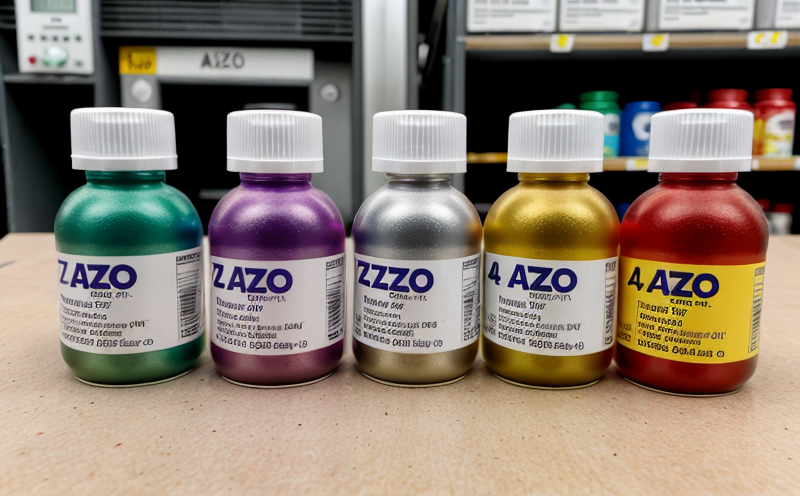EPA 8275 Determination of phthalates and azo dye residues
The EPA method 8275 is a critical tool in ensuring the safety and compliance of textile products, especially those intended for consumer use. This method specifically targets the determination of phthalate esters and azo dyes, which are known to have adverse health effects when present above permissible levels.
Phthalates, such as dibutyl phthalate (DBP), butyl benzyl phthalate (BBP), and diethyl phthalate (DEP) among others, are commonly used in textiles for softening purposes. However, their presence can pose risks to human health due to their potential endocrine-disrupting properties. Azo dyes, on the other hand, may release harmful amines under certain conditions, which could lead to allergic reactions and other adverse effects.
Compliance with EPA 8275 is essential for quality managers, compliance officers, and R&D engineers who are responsible for ensuring that textile products meet stringent environmental and safety standards. This method helps in identifying any potential health risks associated with the use of these substances in textiles.
The testing process involves several steps: sample preparation, extraction, derivatization (where applicable), and finally analysis using gas chromatography or liquid chromatography coupled with mass spectrometry. The results are compared against established limits set by regulatory bodies like Oeko-Tex, REACH, and others to ensure compliance.
This method is particularly important for the textile industry because it helps manufacturers avoid non-compliance issues that could lead to product recalls or legal actions. It also aids in maintaining a good reputation among consumers who are increasingly concerned about the environmental impact of their purchases.
By adhering to EPA 8275, companies can demonstrate their commitment to sustainability and corporate social responsibility. This not only enhances brand image but also ensures long-term customer satisfaction by delivering safe and high-quality products.
Why Choose This Test
- Comprehensive Compliance: EPA 8275 helps ensure that textile products comply with international standards such as Oeko-Tex, REACH, and others.
- Health Safety: By identifying phthalates and azo dyes early in the production process, potential health risks can be mitigated before they become a concern for consumers.
- Market Access: Compliance with this test opens doors to international markets where stringent regulations are enforced.
- Sustainability: Adopting EPA 8275 aligns your business practices with sustainability goals, attracting environmentally conscious customers and partners.
- Avoidance of Penalties: Non-compliance can result in significant financial penalties. By using this test, you avoid the risk of such sanctions.
- Enhanced Reputation: Demonstrating commitment to safety and sustainability enhances your brand's reputation, leading to increased customer trust and loyalty.
The results of EPA 8275 testing directly impact customers by ensuring that they are not exposed to harmful substances present in textiles. This contributes significantly to customer satisfaction, as it reassures them about the safety and quality of the products they purchase.
For compliance officers, this test provides a clear path towards meeting regulatory requirements, thereby avoiding potential legal issues. For R&D engineers, it offers valuable insights into material selection and formulation processes, helping them innovate while staying within safe limits.
In summary, the impact of EPA 8275 testing extends beyond mere compliance; it fosters a culture of responsibility and excellence in the textile industry, ultimately benefiting both businesses and consumers alike.
EPA 8275 plays a crucial role in promoting environmental sustainability by reducing the presence of harmful chemicals in textiles. By minimizing the use of phthalates and azo dyes, textile manufacturers contribute to lower emissions during production processes.
Furthermore, this method supports sustainable development goals by encouraging more responsible practices within the industry. It helps reduce waste generation through better material selection and processing techniques that ensure minimal environmental footprint.
The adoption of EPA 8275 also promotes circular economy principles by facilitating the recycling of materials without compromising on quality or safety standards. This approach not only benefits the environment but also contributes positively towards achieving global sustainability targets set forth by various international bodies.





